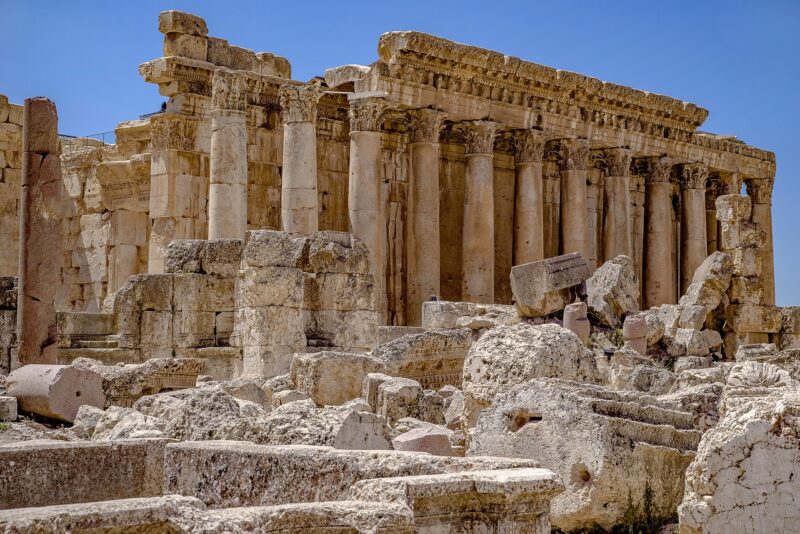The Hidden Meanings in Architectural Designs of Ancient Temples
November 17, 2024

Architectural designs of ancient temples are not just remarkable feats of engineering; they are also rich tapestries woven with cultural, spiritual, and philosophical significance. Each temple, whether dedicated to a deity, embodying the values of a civilization, or intending to facilitate the connection between the human and the divine, showcases intricate patterns, symbols, and materials that convey deep meanings.
1. The Purpose of Temples in Ancient Civilizations
Temples have been central to many ancient civilizations worldwide—from the ziggurats of Mesopotamia and the pyramids of Egypt to the Greco-Roman temples and the Hindu shrines of India. While each temple served as a place of worship, their forms and structures often reflected the broader cultural contexts in which they existed.
Temples were places not only for worship but also for community gatherings, economic activities, and centers of knowledge. They were designed to connect humans with the divine and to symbolize the core values and beliefs of their cultures.
2. Principles of Design: The Order and Proportion in Sacred Architecture
Ancient architects followed specific principles of design that were believed to reflect cosmic order. The layout of temples was often a microcosm of the universe and followed principals of symmetry, proportion, and alignment with celestial bodies.
For example, in ancient Greece, the Golden Ratio (approximately 1.618) was employed to achieve aesthetically pleasing proportions that echo beauty found in nature. In Hindu architecture, temples’ plans included mandalas, representing the universe in harmonious balance. The meticulous attention to these proportions emphasized the civilization’s understanding of beauty as an extension of divine order.
3. Symbolism in Form and Decoration
The designs of ancient temples are laden with symbols that convey layered meanings. Throughout the structures, various motifs represent cultural and religious ideologies.
– Pillars and Columns: Often symbolizing support, strength, and stability, pillars found in temples often depict narratives, showing local lore and religious teachings. For instance, the detailed carvings on the pillars of Dravidian temples in Southern India narrate stories from the Puranas.
– Architectural Elements: Elements like pediments or roof structures may symbolize different heavens or realms, designed to enhance the upward directing nature, signifying ascension to the divine. The towering spires of Gothic cathedrals, for instance, brought worshippers’ eyes upwards, symbolizing elevation towards heaven.
– Material Usage: Different civilizations believed that specific materials had inherent meanings and energies. For example, the use of granite in Egyptian temples was not just for durability but also signified permanence, a way to bridge the earthly with the divine.
4. The Role of Orientation and Geography
Ancient temple designs also included careful consideration of orientation in relation to natural elements. Many structures are aligned with astronomical phenomena, such as the rising of the sun or certain constellations, infusing temporal spiritual significance in their layout.
For example, Stonehenge in England is aligned with the solstices, guiding the spiritual practices of its ancient users. Temples in Ancient Egypt were often oriented to face the east, where the sun rises; this was significant in honoring Ra, the sun god.
The geographical placement of temples often reflects their connection to nature, such as mountains or rivers, which are significant in many spiritual traditions where nature is revered as sacred.
5. Case Studies: Analyzing Specific Temples
In order to understand the artistic and architectural complexities in temple designs, let’s explore a few prominent examples:
– The Parthenon (Athens, Greece): Dedicated to the goddess Athena, the Parthenon’s design illustrates the values of democracy, civic pride, and artistic excellence in ancient Greek society. Employing the Doric order, the temple’s straightforward structure conveys strength and beauty, while it is adorned with intricate friezes depicting historical battles that symbolize the glory of Athens.
– Akshardham Temple (Delhi, India): Representing modern renditions of ancient traditions, the Akshardham Temple reflects Hindu cosmology through its intricate carvings and the use of pink sandstone and Italian carrara marble. It showcases narratives from Hindu scriptures, reiterating the core tenets of harmony, spirituality, and love.
– The Temple of Karnak (Luxor, Egypt): The temple complex dedicated to the god Amun is characterized by immense columns and hieroglyphs reflecting thousands of years of history. The layout and ceremonial axis can be traced back to deliberate architectural planning that aimed to connect mortal activities to the divine through ritual.
6. Modern Interpretations and Legacy
Ancient temple designs have inspired modern architecture, influencing contemporary designs in ways that emphasize cultural roots while blending with modernity. With advances in technology, the complexities of architectural designs echo ancient philosophies and spirituality.
Studying the architectural elements of ancient temples is crucial in understanding humanity’s historical quest for meaning. As we continue to explore and interact with these structures, we glean insights into the values, beliefs, and traditions of societies long past, fostering appreciation for the architectural heritage that endures.
Conclusion
The architectural designs of ancient temples serve as a testament to the creativity and intellectual capacities of our ancestors. Their hidden meanings enrich our understanding of spirituality, cultural expressions, and the complexities of societal values ancient civilizations conveyed through stone, light, and space. Every temple stands not only as a physical structure but as a narrative—a bridge between the celestial and the terrestrial, the human and the divine.
The next time you stand before an ancient temple, consider the stories it holds—the aspirations, beliefs, and cultures that built it and the legacy it continues to represent in our ever-evolving world.







